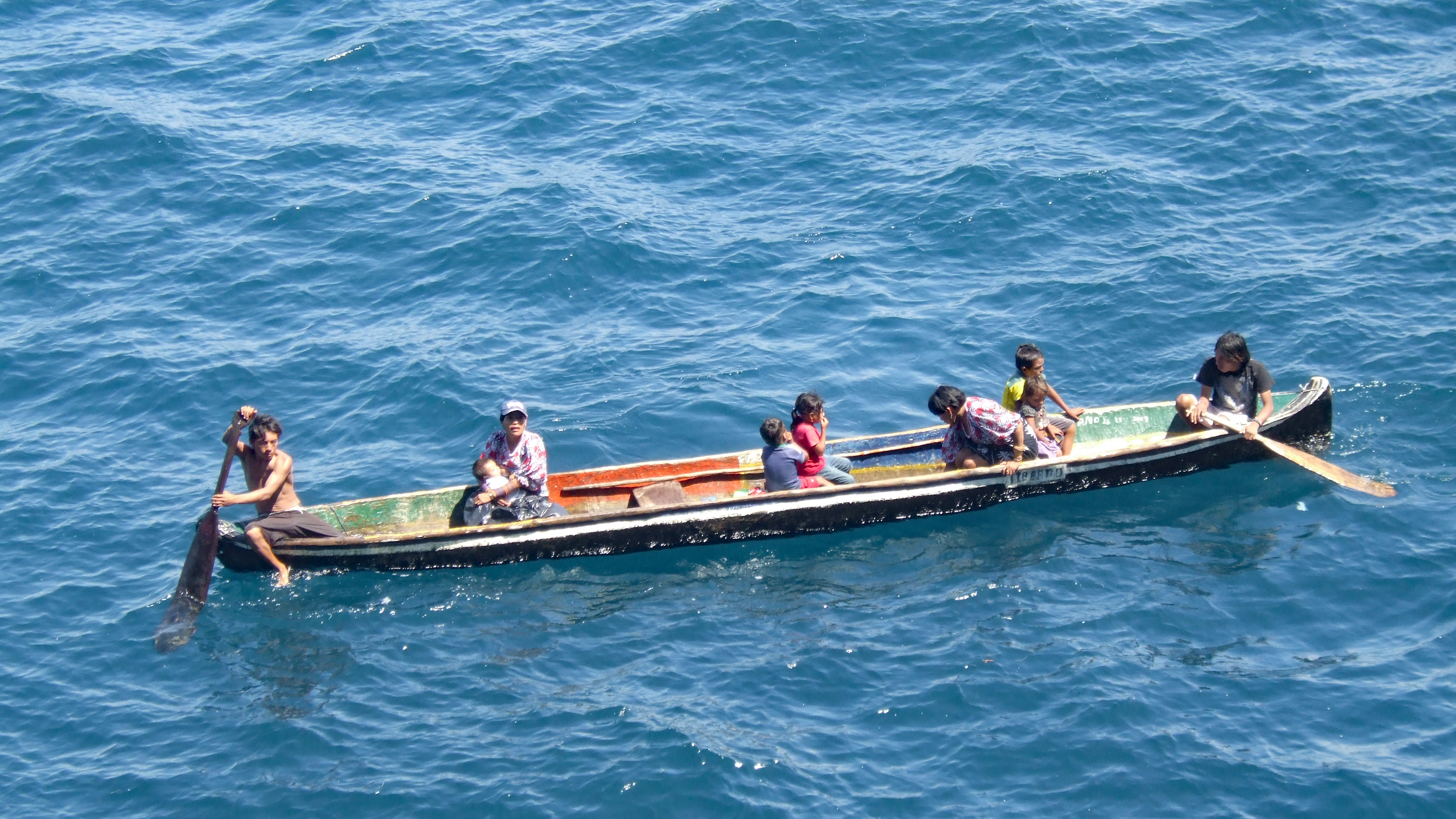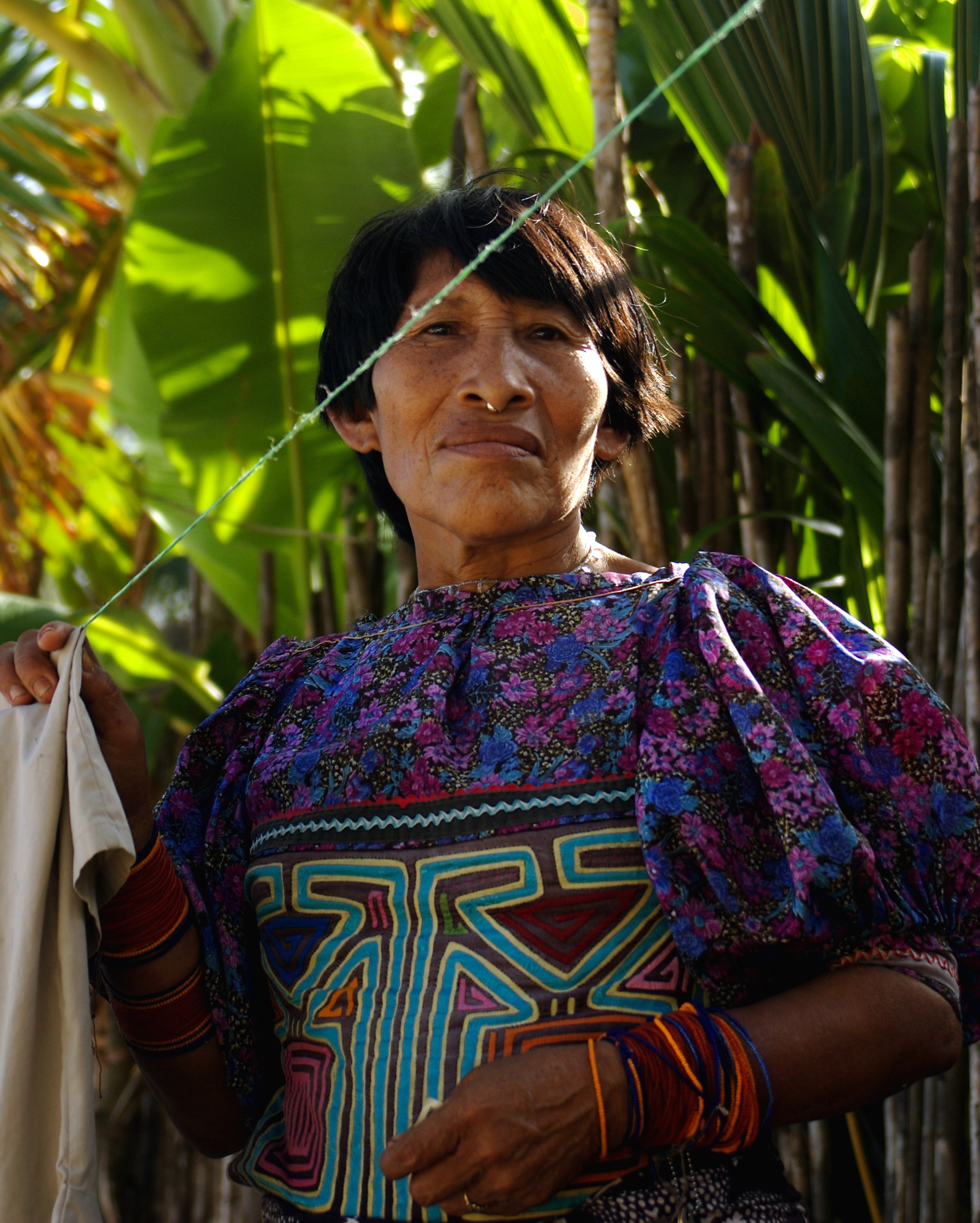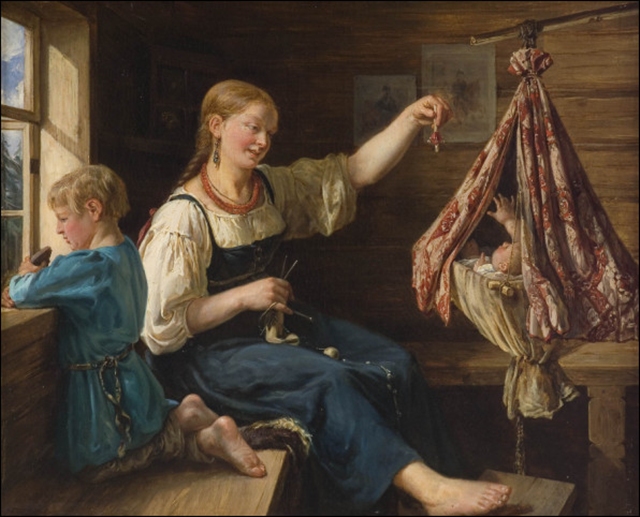|
San Blas Rebellion
The San Blas Rebellion, Guna Revolution or Revolution of Tule was an uprising by the Kuna, to declare independence, in the San Blas Islands, in February 1925. The San Blas Islands The San Blas Islands of Panama is an archipelago comprising approximately 365 islands and cays, of which 49 are inhabited. They lie off the north coast of the Isthmus of Panama, east of the Panama Canal. A part of the ''comarca'' (district) Guna ..., also known as the Guna Yala region, experienced an era of great political unrest during the early twentieth century, following the Declaration of independence, declaration of Independence by the Panamanian government in 1903. The Guna Yala region is situated between Colombia and Panama, and traditionally the Kuna Indians were able to cooperate with Colombia and live peacefully by their own laws and customs. Following Panama's declaration of independence, the new government attempted to control the Guna Yala region and its people, and impose a Westerniz ... [...More Info...] [...Related Items...] OR: [Wikipedia] [Google] [Baidu] |
San Blas Islands
The San Blas Islands of Panama is an archipelago comprising approximately 365 islands and cays, of which 49 are inhabited. They lie off the north coast of the Isthmus of Panama, east of the Panama Canal. A part of the ''comarca'' (district) Guna Yala along the Caribbean coast of Panama is home to the Kuna people. San Blas and its surrounding area is a haven for ecotourism because of its pristine environs. The area is also popular for sailing, as it is known for its beauty and lack of hurricanes. Notable locations in the Archipelago are the main capital El Porvenir, the densely crowded island village of Carti Sugtupu, and the two keys, Cayos Limones, and Cayos Holandeses, both renowned for their clear waters. The islands could be rendered uninhabitable by sea level rise in the late 21st century. Tradition and legacy Before the arrival of Europeans, the Guna wore few clothes and decorated their bodies with colorful designs. When encouraged to wear clothes by the missionari ... [...More Info...] [...Related Items...] OR: [Wikipedia] [Google] [Baidu] |
Nele Kantule
Nele Kantule Iguibilikinya (1868–1944) was a famous chief and medicine man of the Kuna indigenous tribe of Panama. Biography He was born in Putorgandi, in what is today Ustupu Island, Panama. He was a leader of the Kuna from early in the twentieth century until his death. His life was described by Erland Nordenskiöld Baron Nils Erland Herbert Nordenskiöld (19 July 1877 – 5 July 1932) was a Swedish archeologist and anthropologist. Nordenskiöld's research focused on the ethnography and prehistory of South America. Biography He was born in Stockholm, t ..., in his 1938 book on the Kuna, ''An historical and ethnological survey of the Cuna Indians''. References Further reading *''Picture-writing and other documents by Néle, paramount chief of the Cuna Indians and Reuben Pérez Kantule, his secretary; published by Erland Nordenskiöld'' (1928–1930) *James Howe (1998), ''A People Who Would Not Kneel: Panama, the United States, and the San Blas Kuna'' External link ... [...More Info...] [...Related Items...] OR: [Wikipedia] [Google] [Baidu] |
Guna People
The Guna, are an Indigenous people of Panama and Colombia. In the Guna language, they call themselves ''Dule'' or ''Tule'', meaning "people", and the name of the language is ''Dulegaya'', literally "people-mouth". The term was in the language itself spelled ''Kuna'' prior to a 2010 orthographic reform, but the Congreso General de la Nación Gunadule since 2010 has promoted the spelling ''Guna''. Location Guna people live in three politically autonomous ''comarcas'' or autonomous reservations in Panama, and in a few small villages in Colombia. There are also communities of Guna people in Panama City, Colón, and other cities. Most Gunas live on small islands off the coast of the comarca of Guna Yala known as the San Blas Islands. The other two Guna comarcas in Panama are Kuna de Madugandí and Kuna de Wargandí. They are Guna-speaking people who once occupied the central region of what is now Panama and the neighboring San Blas Islands and still survive in marginal areas. Pol ... [...More Info...] [...Related Items...] OR: [Wikipedia] [Google] [Baidu] |
Tourism
Tourism is travel for pleasure or business; also the theory and practice of touring (other), touring, the business of attracting, accommodating, and entertaining tourists, and the business of operating tour (other), tours. The World Tourism Organization defines tourism more generally, in terms which go "beyond the common perception of tourism as being limited to holiday activity only", as people "travelling to and staying in places outside their usual environment for not more than one consecutive year for leisure and not less than 24 hours, business and other purposes". Tourism can be Domestic tourism, domestic (within the traveller's own country) or International tourism, international, and international tourism has both incoming and outgoing implications on a country's balance of payments. Tourism numbers declined as a result of a strong economic slowdown (the late-2000s recession) between the second half of 2008 and the end of 2009, and in consequence of t ... [...More Info...] [...Related Items...] OR: [Wikipedia] [Google] [Baidu] |
Agriculture
Agriculture or farming is the practice of cultivating plants and livestock. Agriculture was the key development in the rise of sedentary human civilization, whereby farming of domesticated species created food surpluses that enabled people to live in cities. The history of agriculture began thousands of years ago. After gathering wild grains beginning at least 105,000 years ago, nascent farmers began to plant them around 11,500 years ago. Sheep, goats, pigs and cattle were domesticated over 10,000 years ago. Plants were independently cultivated in at least 11 regions of the world. Industrial agriculture based on large-scale monoculture in the twentieth century came to dominate agricultural output, though about 2 billion people still depended on subsistence agriculture. The major agricultural products can be broadly grouped into foods, fibers, fuels, and raw materials (such as rubber). Food classes include cereals (grains), vegetables, fruits, cooking oils, meat, milk, ... [...More Info...] [...Related Items...] OR: [Wikipedia] [Google] [Baidu] |
Self-governing Colony
In the British Empire, a self-governing colony was a colony with an elected government in which elected rulers were able to make most decisions without referring to the colonial power with nominal control of the colony. This was in contrast to a Crown colony, in which the British Government ruled and legislated via an appointed Governor, with or without the assistance of an appointed Council. Most self-governing colonies had responsible government. Self-governing colonies for the most part have no formal authority over constitutional matters such the monarchy and the constitutional relationship with the United Kingdom. The Judicial Committee of the Privy Council in London serves as the ultimate avenue of appeal in matters of law and justice. Colonies have sometimes been referred to as "self-governing" in situations where the executive has been under the control of neither the imperial government nor a local legislature elected by universal suffrage but by a local oligarchy state ... [...More Info...] [...Related Items...] OR: [Wikipedia] [Google] [Baidu] |
Popular Culture
Popular culture (also called mass culture or pop culture) is generally recognized by members of a society as a set of practices, beliefs, artistic output (also known as, popular art or mass art) and objects that are dominant or prevalent in a society at a given point in time. Popular culture also encompasses the activities and feelings produced as a result of interaction with these dominant objects. The primary driving force behind popular culture is the mass appeal, and it is produced by what cultural analyst Theodor Adorno refers to as the "culture industry". Heavily influenced in modern times by mass media, this collection of ideas permeates the everyday lives of people in a given society. Therefore, popular culture has a way of influencing an individual's attitudes towards certain topics. However, there are various ways to define pop culture. Because of this, popular culture is something that can be defined in a variety of conflicting ways by different people across diff ... [...More Info...] [...Related Items...] OR: [Wikipedia] [Google] [Baidu] |
Matriarchy
Matriarchy is a social system in which women hold the primary power positions in roles of authority. In a broader sense it can also extend to moral authority, social privilege and control of property. While those definitions apply in general English, definitions specific to anthropology and feminism differ in some respects. Matriarchies may also be confused with matrilineal, matrilocal, and matrifocal societies. While there are those who may consider any non-patriarchal system to be matriarchal, most academics exclude those systems from matriarchies as strictly defined. Definitions, connotations, and etymology According to the ''Oxford English Dictionary'' (''OED''), matriarchy is a "form of social organization in which the mother or oldest female is the head of the family, and descent and relationship are reckoned through the female line; government or rule by a woman or women."''Oxford English Dictionary'' (online), entry ''matriarchy'', as accessed November 3, 2013. A pop ... [...More Info...] [...Related Items...] OR: [Wikipedia] [Google] [Baidu] |
Lullaby
A lullaby (), or cradle song, is a soothing song or piece of music that is usually played for (or sung to) children (for adults see music and sleep). The purposes of lullabies vary. In some societies they are used to pass down cultural knowledge or tradition. In addition, lullabies are often used for the developing of communication skills, indication of emotional intent, maintenance of infants' undivided attention, modulation of infants' arousal, and regulation of behavior. Perhaps one of the most important uses of lullabies is as a sleep aid for infants. As a result, the music is often simple and repetitive. Lullabies can be found in many countries, and have existed since ancient times. Etymology The term 'lullaby' derives from the Middle English ''lullen'' ("to lull") and ''by'' 'e''(in the sense of "near"); it was first recorded circa 1560. A folk etymology derives ''lullaby'' from "Lilith-Abi" (Hebrew for "Lilith, begone"). In the Jewish tradition, Lilith was a demon who ... [...More Info...] [...Related Items...] OR: [Wikipedia] [Google] [Baidu] |
Swastika
The swastika (卐 or 卍) is an ancient religious and cultural symbol, predominantly in various Eurasian, as well as some African and American cultures, now also widely recognized for its appropriation by the Nazi Party and by neo-Nazis. It continues to be used as a symbol of divinity and spirituality in Indian religions, including Hinduism, Buddhism, and Jainism. It generally takes the form of a cross, the arms of which are of equal length and perpendicular to the adjacent arms, each bent midway at a right angle. The word ''swastika'' comes from sa, स्वस्तिक, svastika, meaning "conducive to well-being". In Hinduism, the right-facing symbol (clockwise) () is called ', symbolizing ("sun"), prosperity and good luck, while the left-facing symbol (counter-clockwise) () is called ''sauwastika'', symbolising night or tantric aspects of Kali. In Jain symbolism, it represents Suparshvanathathe seventh of 24 Tirthankaras (spiritual teachers and savio ... [...More Info...] [...Related Items...] OR: [Wikipedia] [Google] [Baidu] |
Ailigandí
Ailigandí or Agligandi is a town and island in the Kuna Yala province of Panama Panama ( , ; es, link=no, Panamá ), officially the Republic of Panama ( es, República de Panamá), is a transcontinental country spanning the southern part of North America and the northern part of South America. It is bordered by Cos .... The island is just off the coast and is served by Ailigandí Airport. The town is also called Manglar or ''Mangrove Swamp''. Sources Aerial view Populated places in Guna Yala {{GunaYala-geo-stub ... [...More Info...] [...Related Items...] OR: [Wikipedia] [Google] [Baidu] |
Flag Of Kuna Yala
A flag is a piece of fabric (most often rectangular or quadrilateral) with a distinctive design and colours. It is used as a symbol, a signalling device, or for decoration. The term ''flag'' is also used to refer to the graphic design employed, and flags have evolved into a general tool for rudimentary signalling and identification, especially in environments where communication is challenging (such as the maritime environment, where semaphore is used). Many flags fall into groups of similar designs called flag families. The study of flags is known as "vexillology" from the Latin , meaning "flag" or "banner". National flags are patriotic symbols with widely varied interpretations that often include strong military associations because of their original and ongoing use for that purpose. Flags are also used in messaging, advertising, or for decorative purposes. Some military units are called "flags" after their use of flags. A ''flag'' (Arabic: ) is equivalent to a brigade i ... [...More Info...] [...Related Items...] OR: [Wikipedia] [Google] [Baidu] |






.png)
